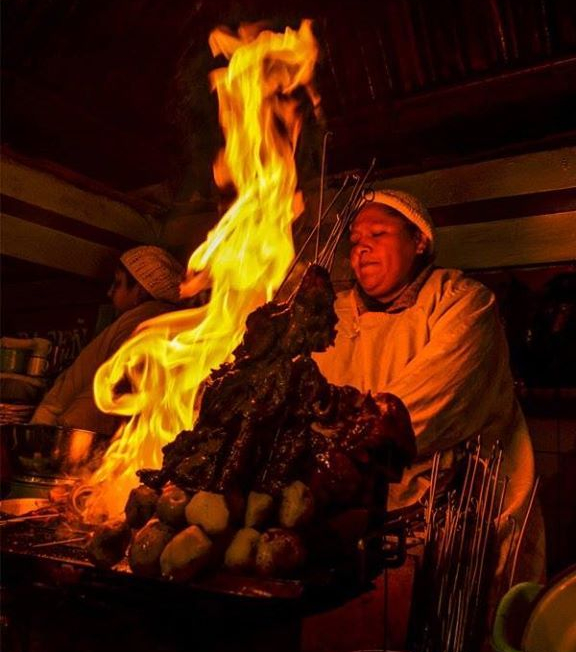Bolivia is a country of incredible diversity: from highlands and salt flats at 4000 meters above sea level, the only place where Royal Quinoa can be grown and potato species are counted in the hundreds, to the tropics where hundreds of species of fruits and vegetables thrive; from the traditions of indigenous ingredients and preparations to the influence of French, Spanish and German immigrants.
Despite its rich culinary heritage, Bolivia has been slow in standing out as a culinary tourist destination. The truth is, industries such as wine, beer, coffee and chocolate have shown incredible development in the last decades, with many brands winning several international awards. Gourmet restaurants have also flourished in the main cities, such as La Paz and Santa Cruz, complementing the vibrant street-food scene across the country. The best part? Eating in Bolivia is cheaper than anywhere else in the region, so you can really have a foodie feast on a budget.
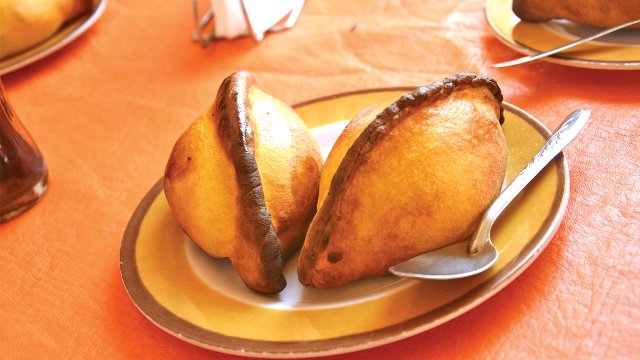
In this post, we imagine a Bolivia street food tour around the country´s best cities to eat, telling you about the street-foods you can´t miss and how to eat them safely. Check out next week’s posts in this series for a full report about gourmet food and restaurants in Bolivia. Let´s get started!
Street food in Bolivia is delicious, varied and easy on the wallet. Nevertheless, as a tourist, you should be careful to eat only in places where cleanliness and food safety is guaranteed. Also, some dishes are spicy and others come with spicy sauces, so be careful if you can’t hold your chili.
Any self-respecting foodie in a Bolivia street-food tour should start in La Paz, the seat of government in Bolivia, a city located at 3,600 meters above sea level where you can taste the following dishes:
Salteñas
These baked pockets of goodness are originally from Argentina and became very popular first in Sucre and Potosi, since their size and shape made them perfect for taking to the mines as a hearty lunch. But it was in La Paz that their current recipe was perfected, making them the juicy, meaty, somewhat spicy, golden-crusted dish they are today. Here is the practical info you need to know:
- Although the original salteña is stuffed with red meat, salteñas now come with a variety of stuffings, like pork and chicken.
- As opposed to many other street-foods in Bolivia, some salteñerías offer vegetarian salteñas, so you can enjoy them even if meats are not part of your diet.
- You can always spot a person eating salteñas for the first time, from the way the juice splatters all over their clothes. If you don’t want half your food to end up on your shirt, check out this demonstrative video.
- Though the best are in La Paz, you can also find salteñas in Sucre, Cochabamba and Potosi, in the mornings, between 10:00 and 14:00.
- If you want to avoid getting sick, don’t buy them from food carts on the street. Stick to salteñerias (special restaurants that sell salteñas). The price should be between 6.5 and 8.0 Bolivianos (around one US Dollar)
- The best restaurants are Salteñas Chuquisaqueñas (La Paz), La Paceña (La Paz), El Patio (Sucre), and Los Castores (Cochabamba)
Other Bolivian street foods you must try in La Paz are:

- Sandwich de Chola: a traditional sandwich made from pork. Though you can get it at many street-cars around the city, go to the Las Cholas park for the freshest sandwich.
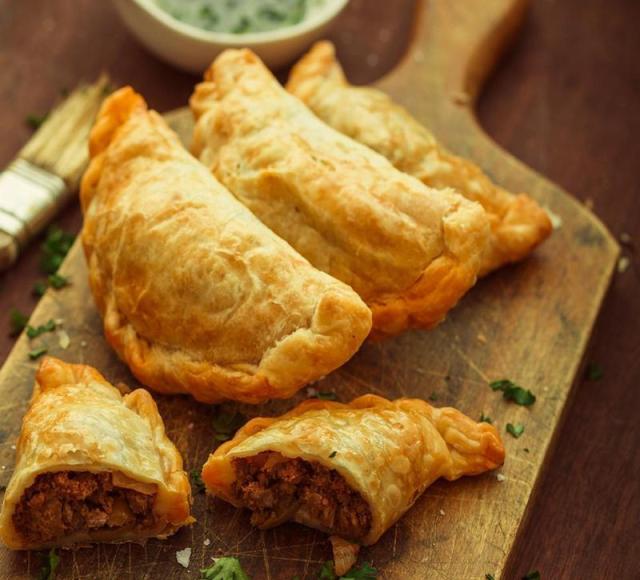
- Tucumanas: Similar to Salteñas, these are fried, not baked, and come with a variety of sauces to garnish. Remember to never eat them from street cars, only restaurants. Tucumanas del Prado are the most popular and tasty.
From La Paz, you can take a bus to Cochabamba for the next stop in your foodie Bolivia street food tour. Cochabamba is a city in the heart of Bolivian valleys, located at an altitude of 2,600 meters above sea level. The city is the third largest in Bolivia, but the unchallenged capital of eating, with many traditional dishes and a culture of eating abundantly. Here are the street foods you must try:
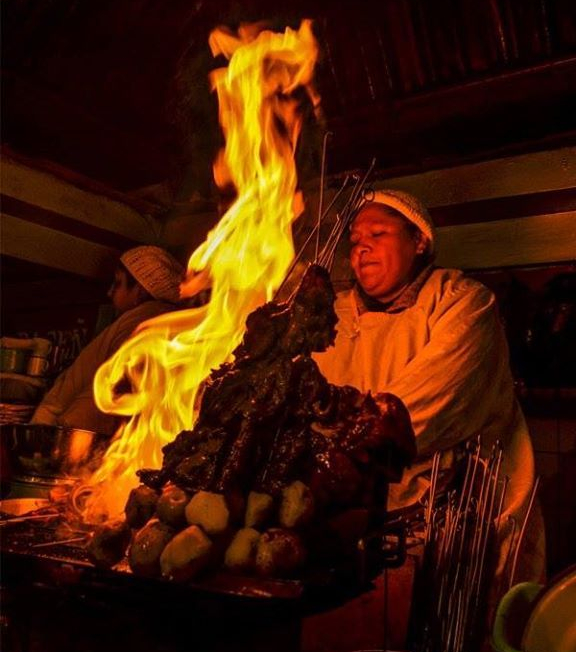
Anticuchos are a very traditional street-food in Bolivia and Peru, with the vendors coming out at around 7 pm to perform the spectacle of igniting their grills and starting to cook the meat and potatoes in metal skewers. In Peru, the meat can be anything from beef to seafood. In Bolivia, anticuchos are made only from thinly sliced beef heart. The meat and potatoes are first marinated in spices, then grilled in skewers and finally covered in a creamy sauce made from yellow chili and peanuts. Here is all the information you need:
- Don´t be turned off by the heart meat. When thinly sliced and well-cooked, the meat becomes incredibly tasty and with great texture. Do make sure you ask your vendor to cook the meat well, as this improves the texture and is also safest on your stomach.
- There is almost no choice but to eat anticuchos from street cars, as restaurants that offer this dish are almost non-existent. For a really traditional place in La Paz go to Las Velas, a market that specializes in anticuchos. In Cochabamba, go to Las Islas.
- Vegan anticucho options are currently few. Some vegetarian restaurants offer anticuchos from vegetable meats, such as seitan, which taste incredibly good. In La Paz, Try La Ventanita. In Cochabamba, your best bet is Nina Café Bistró Vegetariano.
- Anticuchos are a staple of nightlife, and anticucheras are rife on the streets of Cochabamba and La Paz from 7 pm to 4 am on weekends.
- Expect to pay between 10 and 12 Bolivianos for a portion. The portions are not large, just the meat that fits in a mid-size skewer and two small potatoes. If you´re hungry, you will probably need two. Or three.
- The creamy, yellow sauce that anticuchos are covered in is spicy. Just how spicy varies, so you may want a taste of it before your food gets covered in it. Also, obviously, steer CLEAR of it if you have a peanut allergy.
Other street-food to try in Cochabamba:
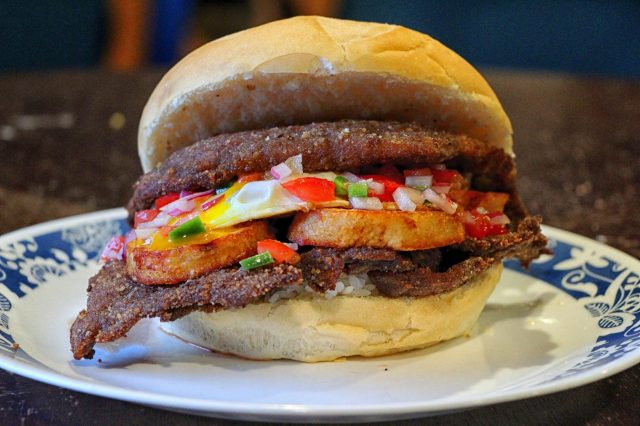
- Trancapecho: literally means “stuck in your chest”, this sandwich has rice, potatoes, lettuce, tomatoe, a fried egg and a thin piece of beef or chicken
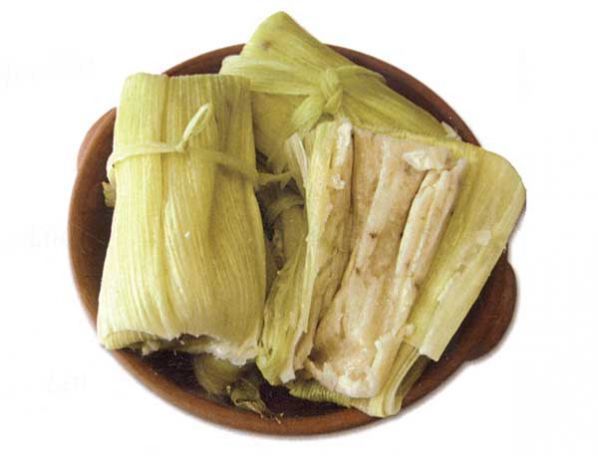
- Humintas: Quite similar to tamales, humintas are a dough made from ground corn mixed with anise seed and cheese, wrapped in corn leaves and either boiled or baked to a creamy goodness.
The next stop in our foodie Bolivia street food tour is Santa Cruz. You can easily take a bus from Cochabamba to Santa Cruz, the capital of the Bolivian lowlands. Here are the street-foods in Santa Cruz you need to try:
Sonso and cuñape
Street food in the low-lands, such as Santa Cruz, is dominated by cheesy pastries made with yucca, sold in street-cars and bakeries. They are baked (or grilled) fresh every day and offered between 3 pm and 7 pm, so you can eat them with a cup of coffee. More details coming right up:

- Sonso is a mixture of mashed yucca, cheese and butter, which can be baked or grilled in wood skewers over hot coals in street cars. The taste and texture are absolutely sublime
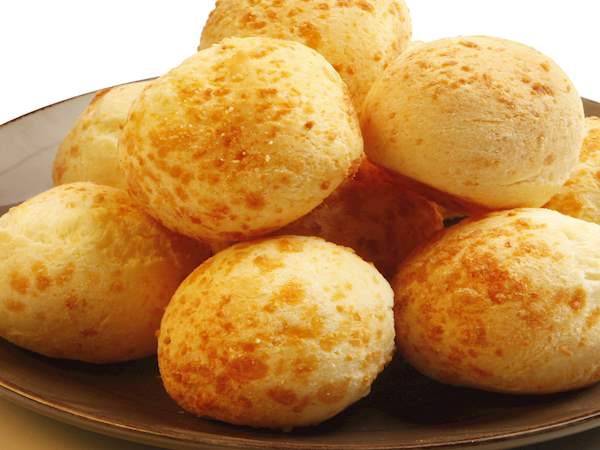
- Cuñape is a similar pastry, made not from mashed yucca but from yucca flour mixed with cheese and butter, and baked in special ovens
- Happily for vegetarians, no meat goes into these!
- You can expect to pay around 5 Bolivianos for a portion on the street. Some upscale bakeries and coffee shops offer them, as well, at a slightly higher price.
- Although, traditionally, these foods come from Santa Cruz, you will be able to find them at some coffee shops and bakeries in La Paz, Sucre and Cochabamba, as well.
Other street food in Bolivia you can´t miss, by city:
- Sucre: You can´t leave without trying the sausage. The best place is in Choricería 7 lunares. Also, you can´t miss the nation-famous Sandra´s Ice Cream you can buy at El Parque. Really, the best ice cream you will eat in Bolivia.
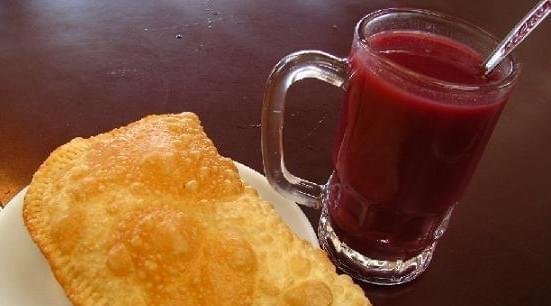
- Oruro: Api with pastel is a traditional meal that is originally from Oruro, but that you can enjoy in La Paz, Sucre, Cochabamba and Potosí, as well. Api is a sweet, hot beverage made from the flour of purple corn, and it comes with a pastry made from fried wheat flour and cheese. In cold weather, nothing gets you warmer.
We hope the information is useful. Happy traveling and tasty eating!

